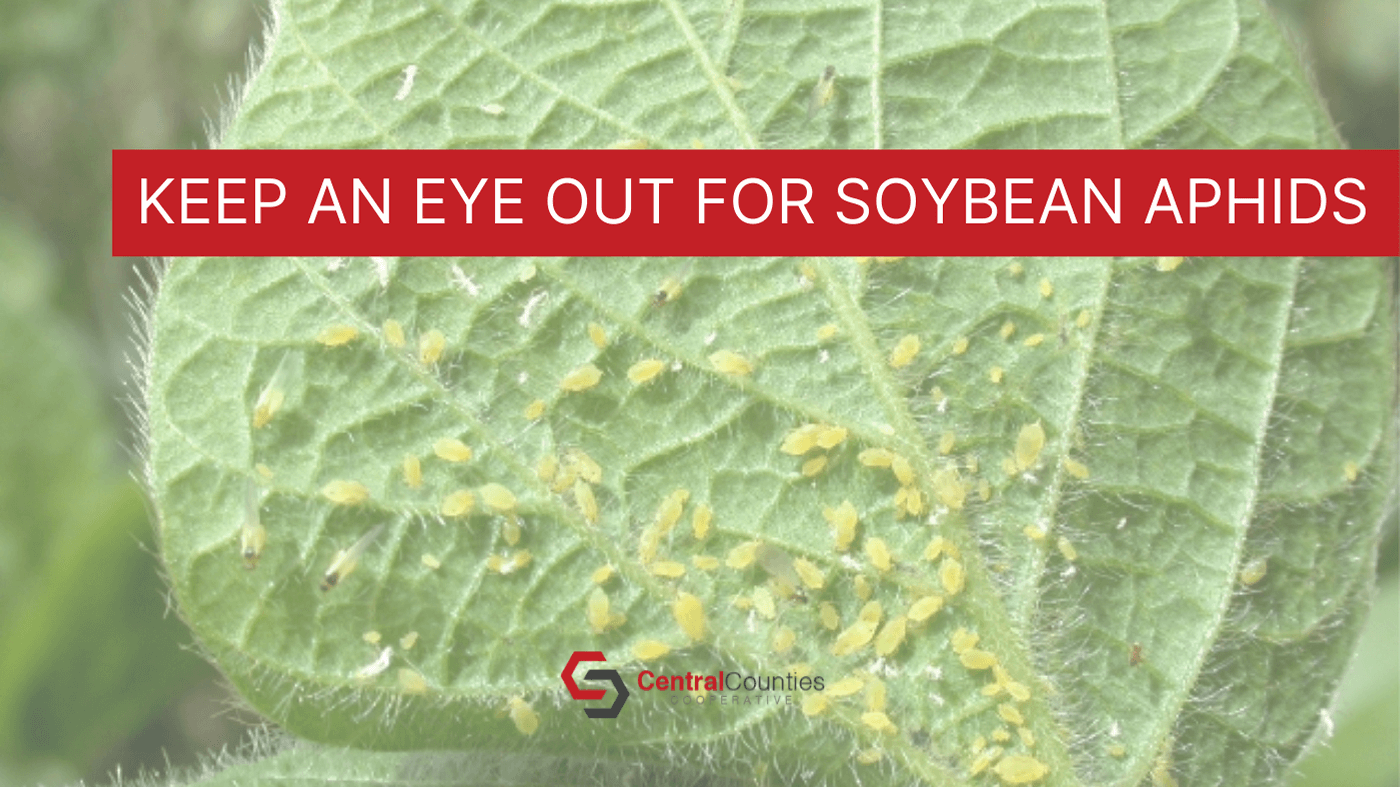Keep an Eye out for Soybean Aphids
Jul 14, 2020

There is quite a bit of time left in the aphid season, and Central Counties agronomists foresee soybean aphids being an issue this year. As protective soybean canopies close, host quality of early reproductive stage soybeans improve, aphids should muddle through. The drier conditions will also favor aphids. Soybean aphids could start appearing in abundance any day and it is important to know what to look for. Here are some tips on what to do about soybean aphids:
Identification
Life Cycle of the Soybean Aphid
Soybean aphids overwinter as eggs on buckthorn in wooded areas. Come springtime the eggs hatch and several generations of aphids are produced. The aphids eventually fly to soybean fields where numerous generations of aphids are produced during the summer. In the fall, aphids return to the buckthorn where they deposit eggs and overwinter.
Scouting and Management
Pay attention to fields that have abundant buckthorn or woods around them. Smaller fields and early-planted fields are also at a higher risk. The presence of lady beetles or ants on soybean plants is often ana indicator of aphid colonies. According to the University of Minnesota Extension, the treatment threshold (from vegetative through R5) is:
If you find that your field(s) needs to be treated for aphids, bifenthrin and chlorpyrifos products will provide effective control. Tundra Supreme offers two modes of action for resistance prevention and outstanding control. With flexible application options; can be applied by ground, air, or chemigation. And effective, season-long control with long-lasting residual protection.
Be sure to get out and scout for aphids and please contact your Central Counties agronomist with any questions or with help identifying pests and treatment options.
Identification
- Small pear-shaped bodies
- Black cornicles at the end of the abdomen
- Piercing-sucking mouthparts tucked under the head
- Both winged and wingless morphs may be found on soybean
Life Cycle of the Soybean Aphid
Soybean aphids overwinter as eggs on buckthorn in wooded areas. Come springtime the eggs hatch and several generations of aphids are produced. The aphids eventually fly to soybean fields where numerous generations of aphids are produced during the summer. In the fall, aphids return to the buckthorn where they deposit eggs and overwinter.
Scouting and Management
Pay attention to fields that have abundant buckthorn or woods around them. Smaller fields and early-planted fields are also at a higher risk. The presence of lady beetles or ants on soybean plants is often ana indicator of aphid colonies. According to the University of Minnesota Extension, the treatment threshold (from vegetative through R5) is:
- Average counts exceed 250 aphids per plant and
- More than 80% of the plants are infested, and
- Aphid populations are increasing.
If you find that your field(s) needs to be treated for aphids, bifenthrin and chlorpyrifos products will provide effective control. Tundra Supreme offers two modes of action for resistance prevention and outstanding control. With flexible application options; can be applied by ground, air, or chemigation. And effective, season-long control with long-lasting residual protection.
Be sure to get out and scout for aphids and please contact your Central Counties agronomist with any questions or with help identifying pests and treatment options.